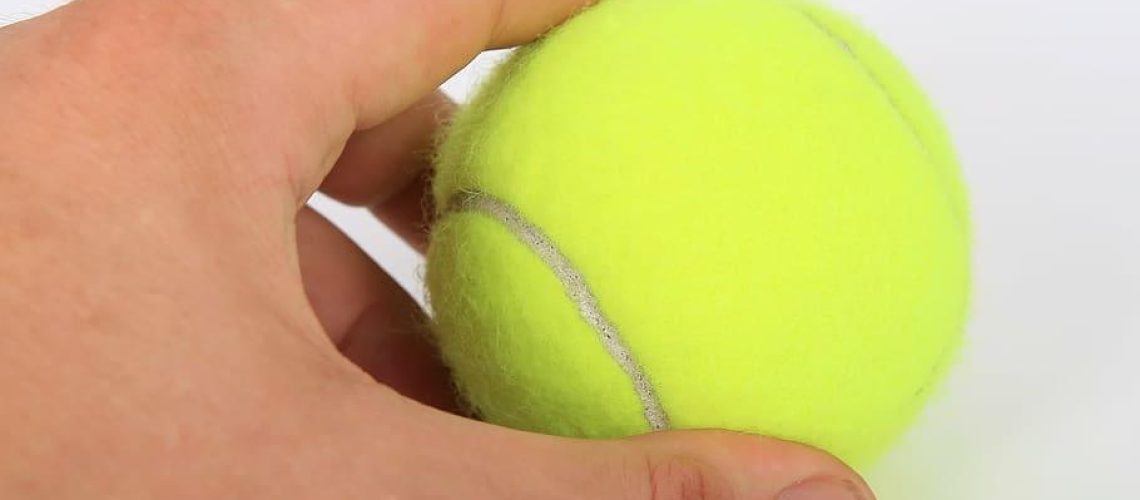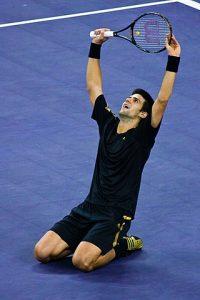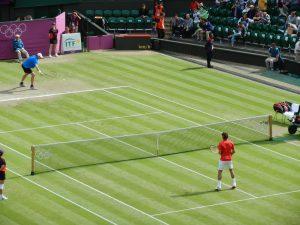We may earn money or products from the companies mentioned in this post.
Introduction to Paddle Tennis

Paddle tennis, a sport that combines elements of tennis and racquetball, has been gaining popularity around the world in recent years With its fast-paced gameplay and unique paddle-shaped rackets, it offers a thrilling experience for players of all skill levels In this article, we’ll take a closer look at the origins and growth of paddle tennis, its global appeal, as well as the basics of the game
Brief History of Paddle Tennis
Paddle tennis can trace its roots back to the early 20th century when it was first played on the beaches of New York City The game quickly gained popularity among beachgoers who were looking for a fun and competitive activity Over time, paddle tennis evolved into a more organized sport with dedicated courts and standardized rules
Today, paddle tennis is not only enjoyed on sandy beaches but also on specially designed courts made with synthetic materials These courts provide better traction and allow for year-round play in various climates
Popularity Around the World
While paddle tennis originated in the United States, it has now spread far beyond its shores The sport has gained significant popularity in countries like Spain, Argentina, and Mexico where it is known as “padel” In these countries, there are numerous professional tournaments and leagues dedicated to paddle tennis
The appeal of paddle tennis lies in its accessibility It can be played by people of all ages and skill levels Whether you’re a beginner learning the ropes or an experienced player looking for a challenging match, there’s something for everyone in this dynamic sport
Equipment and Court Specifications for Paddle Tennis

Paddle tennis, a popular recreational sport, requires specific gear and court specifications to ensure an enjoyable and competitive game Let’s dive into the essential equipment needed for paddle tennis, including paddles and balls, as well as the court dimensions and markings
Essential Gear for Playing Paddle Tennis
1 Paddles: When it comes to paddle selection, players have various options in terms of materials, sizes, and grip types Paddles are typically made from materials like graphite or carbon fiber composite, offering durability and flexibility during gameplay As for size, paddle length usually ranges from 18 to 20 inches long with a width of 9 to 10 inches Lastly, players can choose between different grip types such as cushioned grips or perforated ones for better comfort and control
2 Balls: Unlike regular tennis balls, paddle tennis balls are specifically designed to suit the smaller court size These balls are slightly depressurized compared to their tennis counterparts, allowing for a slower pace and better control during rallies The reduced bounce ensures that players can engage in longer rallies without the ball flying off uncontrollably
Court Dimensions and Markings
1 Size Comparison with Standard Tennis Courts: Paddle tennis courts are significantly smaller than standard tennis courts but still provide ample space for exciting gameplay A standard paddle tennis court measures 50 feet in length by 20 feet in width compared to a full-size tennis court that spans 78 feet by 36 feet
2 Important Lines and Zones on the Court: To maintain fairness during matches, paddle tennis courts feature specific lines and zones that define different areas of play:
- The Baseline: This line marks the back boundary of the court, indicating where players must stay behind during serves and rallies
- The Service Line: Positioned 6 feet from the net, this line determines the area from which players must serve
- The Center Line: Running parallel to the net, this line divides the court into two equal halves, allowing for strategic placement of shots
- The Sidelines: These lines mark the left and right boundaries of the court, ensuring that shots remain within play
Understanding these court dimensions and markings is crucial for players to navigate their shots effectively and adhere to game rules
In conclusion, paddle tennis requires specific equipment such as paddles and balls designed specifically for this sport Additionally, understanding court dimensions and markings ensures fair gameplay and strategic shot placement With the right gear and a well-maintained court, paddle tennis enthusiasts can enjoy hours of thrilling matches on a smaller but equally engaging playing surface
Rules and Techniques for Playing Paddle Tennis

Paddle tennis is an exciting sport that combines elements of tennis and racquetball Whether you’re a beginner or a seasoned player, understanding the rules and techniques of paddle tennis is crucial to improving your game In this article, we’ll explore some key aspects of serving rules and strategy tips that will help you excel on the court
Serving Rules in Paddle Tennis
In paddle tennis, serving plays a vital role in gaining an advantage over your opponents Let’s take a closer look at the serving rules:
-
Underhand Serve Technique:
Unlike traditional tennis, paddle tennis requires players to use an underhand serve technique This technique involves a few key elements: -
Proper Stance and Grip:
Position yourself with your feet shoulder-width apart and maintain a firm grip on the paddle -
Tossing the Ball Correctly:
Toss the ball slightly in front of you and at a height where it reaches waist level -
Striking the Ball at Waist Height:
Swing your paddle upward to strike the ball when it’s at waist height, aiming to send it towards your opponent’s side -
Diagonal Serve Requirement:
When serving, make sure to hit the ball diagonally across the net instead of directly towards your opponent -
Double Faults Consequences:
In paddle tennis, if you fail to get your serve in play twice in a row, it results in a double fault This means that your opponents will earn a point
Strategy & Gameplay Tips
Mastering the art of paddle tennis involves not only understanding the rules but also employing effective strategies during gameplay Here are some tips to enhance your strategy:
-
Knowing When to Use Groundstrokes or Volleys:
Understanding when to use groundstrokes (hitting the ball after it bounces) or volleys (hitting the ball before it bounces) is crucial in paddle tennis Assess the situation and choose the appropriate shot to gain an advantage -
Positioning on the Court:
Proper positioning on the court can make a significant difference in your gameplay Stay alert and adjust your position based on your opponent’s shots, ensuring you’re ready to react swiftly -
Teamwork in Doubles Matches:
Paddle tennis is often played in doubles matches, requiring effective teamwork Communicate with your partner, coordinate movements, and strategize together for a winning game plan -
Effective Use of Spin & Lob Shots:
Experimenting with spin shots (adding spin to your shots) and lob shots (high-arcing shots over your opponents’ heads) can catch your opponents off guard and give you an upper hand during rallies
Incorporating these serving rules and strategic gameplay tips into your paddle tennis repertoire will undoubtedly elevate your skills on the court Remember, practice makes perfect, so get out there and enjoy playing this thrilling sport!
Improving Your Skills & Joining The Paddle Tennis Community

Are you looking to level up your paddle tennis game and become part of a vibrant community? Look no further! In this article, we’ll dive into some practical steps to enhance your skills and find local clubs or leagues that will allow you to immerse yourself in the paddle tennis world So grab your racket, let’s get started!
Practice Drills to Enhance Your Skills
If you want to take your paddle tennis skills to new heights, practice is key Here are three drills that can help you improve different aspects of your game:
-
Wall Practice for Consistency:
Find a solid wall and hit the ball against it repeatedly This drill will help develop consistency in your shots as you focus on hitting the ball cleanly every time -
Serving Drills to Improve Accuracy:
Set up targets on the opposite side of the court and practice serving directly at them This exercise will enhance your accuracy and boost your confidence when it comes to serving under pressure -
Volley Exercises for Better Reflexes:
Grab a partner or use a rebound board if available Practice volleying back and forth, focusing on quick reactions and maintaining control over the ball
Finding Local Clubs or Leagues
To fully immerse yourself in the paddle tennis community, joining a local club or league is essential Here’s how you can find one near you:
-
Familiarizing Yourself with National Organizations:
Start by researching national paddle tennis organizations in your country They often have directories or resources that can point you towards local clubs or leagues -
Discovering Regional Tournaments & Events:
Attend regional tournaments or events in your area These gatherings are great opportunities to network and connect with fellow paddle tennis enthusiasts who can provide insights on local clubs or leagues
By actively participating in the paddle tennis community, you’ll not only improve your skills but also forge new friendships and create memorable experiences on and off the court So don’t hesitate – take that first step towards becoming a part of this exciting community today!
Useful Links

Paddle Tennis -‐‐ Note on Sportsmanship and Etiquette
Paddle Ball Rules – Charleston Beach & Game Rentals
What is Padel / Paddle tennis / Platform tennis?
What is Padel Tennis?
Rules of Platform Tennis
Platform, paddle, pop, padel tennis and pickleball
Instructional Videos – Old Farm Swim and Paddle Tennis Club
How to play paddle tennis? Score, Shovel, Ball…
How to Play Pop Tennis [and is it same as Paddle Tennis?]
Start Playing Padel in London
Platform/Paddle Tennis Courts
Things You Need to Know About Padel Sport
The Ultimate Guide to Playing Padel in 2022
Basic Padel Rules
All the equipment you need to play padel
Can You Play One on One Padel? – The padel magazine
Can you play Pickleball on a Paddle Tennis court? – Racketopia
Padel
Meet new friends, get exercise, & learn how to play Paddle …





